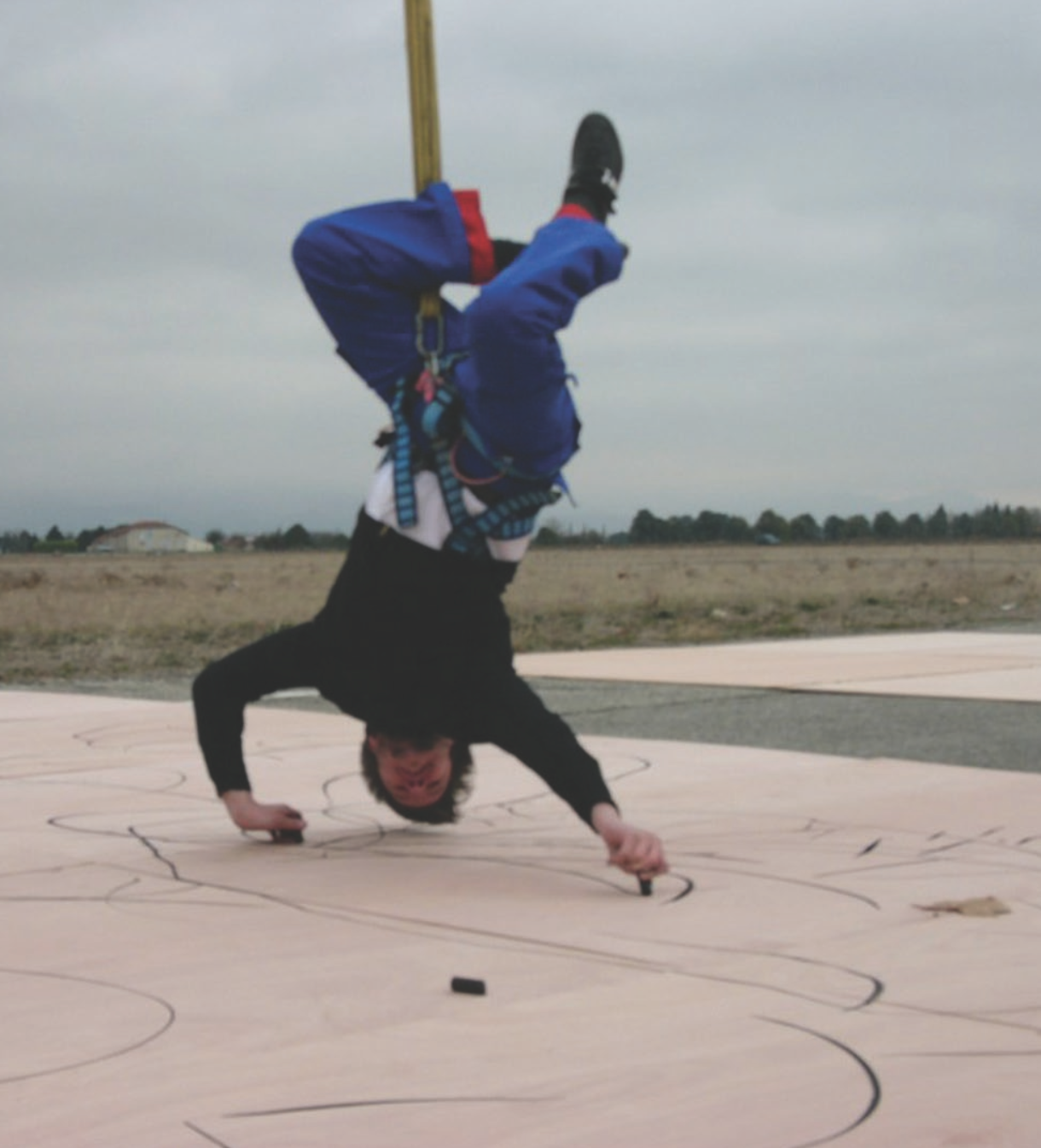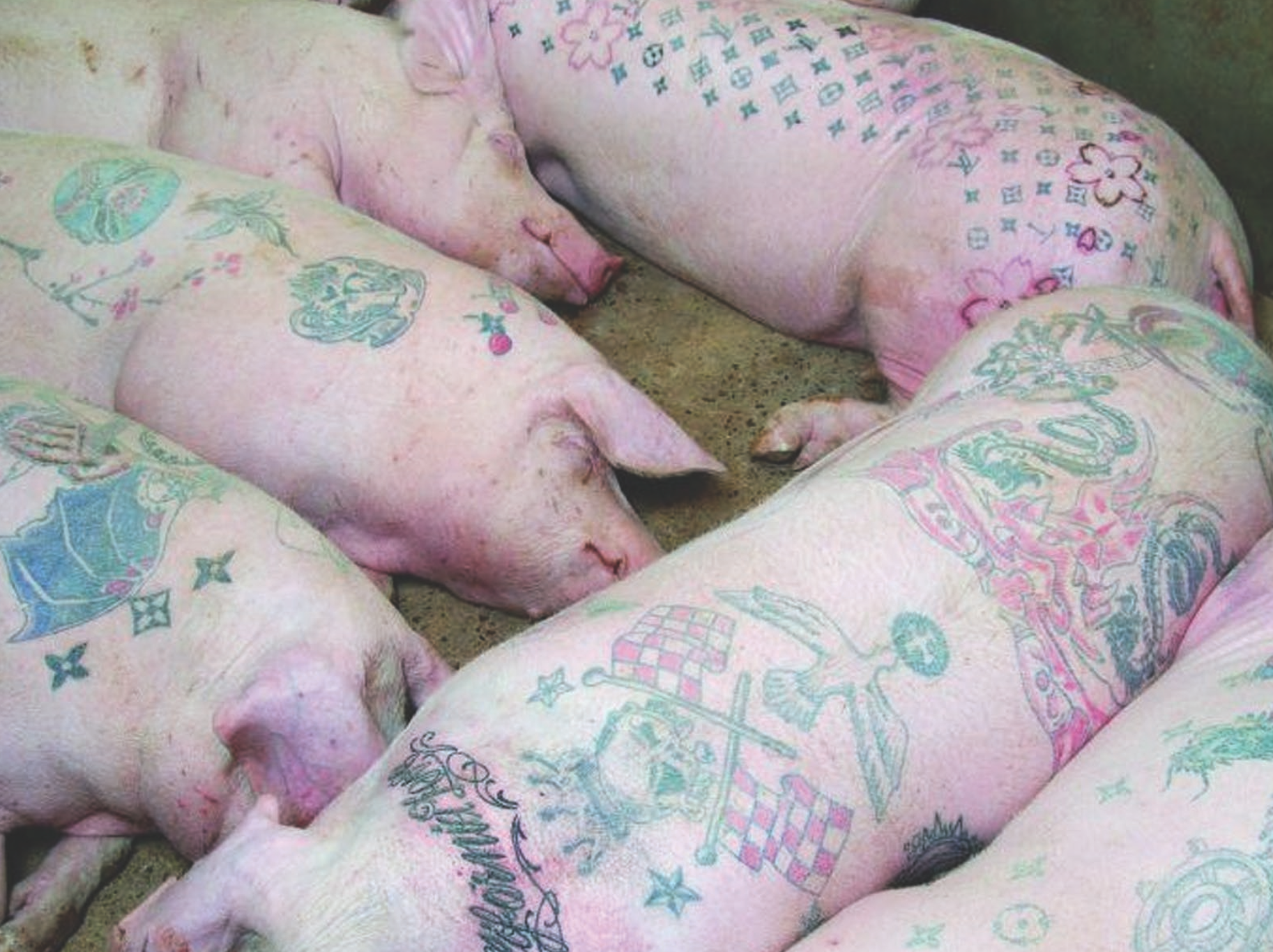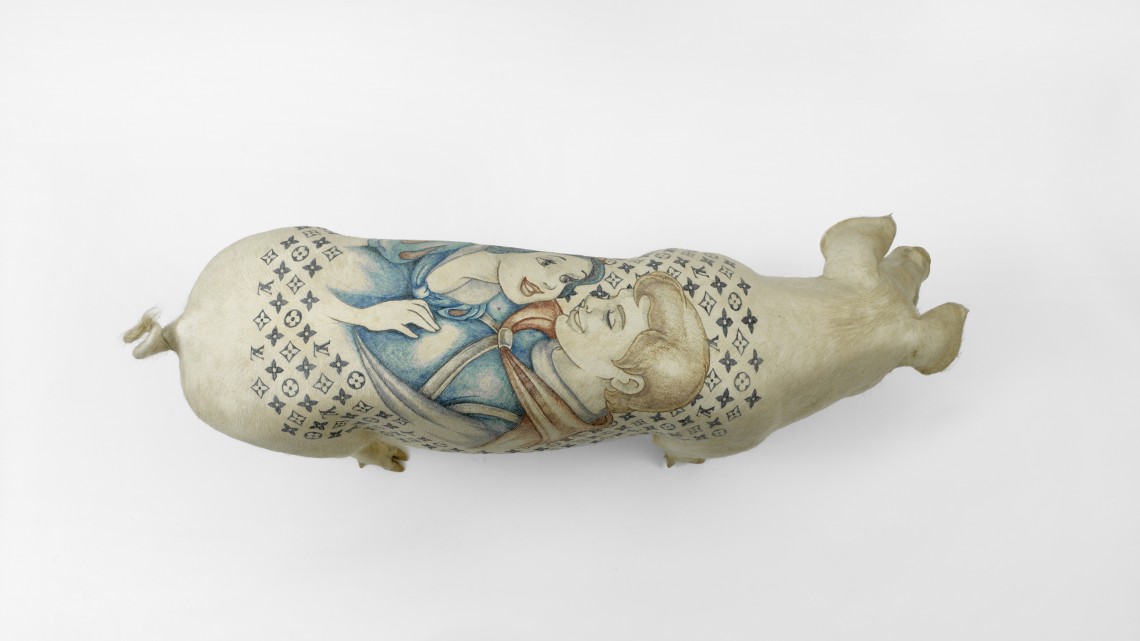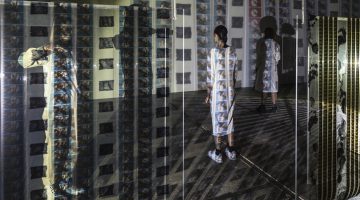The previous issue of SFAQ contained an excerpt from the first chapter of my little book Achievement, Failure, Aspiration: Three Attempts to Understand Contemporary Art. The first chapter considered the work of William Ken- tridge as an instance of a distinctive kind of achievement in contemporary art, one that Rosalind Krauss dubbed “the recreation of a medium.” Below is a selection from the second chapter, wherein I tried to isolate and analyze a distinctive kind of failure in contemporary art, wherein the artist creates a work that involves a kind of subversion of the very virtues and activities required of a sympathetic and attuned viewer of visual art. Or so I claim:
I shall investigate this issue [of kinds of failure] through consideration of what I take to be a remarkable disaster in contemporary art: an exhibition of the work of the artist Adel Abdessemed entitled Don’t Trust Me. The work opened at the San Francisco Art Institute in late March 2008, and was closed shortly thereafter in response to protests. This work is such that it inevitably invokes a kind of reaction familiar in response to many (purported) works of modern art, namely “Is this art?” . . .
First the work: As you approach the gallery you see two video monitors on the floor. Your gaze rests on the one that shows an adult pig. The image is closely framed, but you can make out that the pig is tethered, outside somewhere, in front of a drab building. Suddenly, a blur, a loud crack, then, after a fraction of a second, the pig topples. Repeat. The blur is the head of a sledgehammer whose blow kills the pig. Inside there are more monitors showing the same scenario with other animals, including a small doe or perhaps a fawn. On the right, written in neon cursive, is the phrase “The world looks different when seen with an animal’s eyes.” In the middle of the room is a large screen showing someone, presumably the artist, suspended by a rope tied to his foot, over a concrete pad. The pad is covered with large sheets of paper, and the person seems to be trying to draw on them. He’s suspended from a helicopter just outside the frame, and his unsteadiness as the helicopter slightly ascends and descends frustrates his attempts to draw. He’s allegedly trying to draw Gericault’s Raft of the Medusa. Four other video monitors showing other animals being bludgeoned are arrayed on the floor around the screen. Upstairs there’s a large neon outline figure of a human brain . . .

Adel Abdessemed, Helikoptère, 2007. Video, 3 min (loop), color, sound. Dimensions vary with installation. Courtesy of the Internet.

Théodore Géricault, “The Raft of the Medusa,” 1818–1819.
One way of approaching the work is to consider three ways in which contemporary artworks are typically “experienced” (in a very loose sense). I’ll call these ways the rumor, the glance, and the encounter. A great many contemporary artworks seem to have as their primary aim getting themselves talked about (the rumor); my semi-random examples above perhaps fall in that category. Another type seem to exhaust themselves in what can be taken in at a glance; the viewer’s typical response is to say “oh, it’s one of those x’s,” where “x” is either a work of the artist (in which case the work is a kind of “logo” of itself, a feature of recent art that Richard Wollheim once suggested is a degenerate form of the interest in artistic style) or a category of artworks. The commentaries about Abdessemed’s piece remain at the level of the rumor and the glance. They content themselves with discussing “the very idea” of a piece that is, or has among its parts, videos of animals being bludgeoned to death. Remarks [made in defense of the piece] such as those of [former SFAI president Chris] Bratton and [former SFAI dean Okwui] Enwezor are typical of what Noël Carroll has identified as the hermeneutic atmosphere surrounding today’s art made for international biennials, where the taboo on hand-made artifacts, the primary use of photography, video, film, and texts, and the technique of radical juxtaposition are given a purported intelligibility by an atmosphere of “theory” conjured through the citation of, or even more typically mere allusion to, various works of Walter Benjamin, Roland Barthes, Michel Foucault, Jacques Derrida, etc.
By “encounter” I mean what has long been taken to be the authoritative experience induced by artworks: the perceptual and imaginative encounter with a densely meaningful and richly significant artifact, one made in such a way as to guide and reward such perceptual and imaginative attentions. What encounter does this work induce? I refrain from an extended interpretation of this repugnant work, but I’ll focus on the particular uses to which Abdessemed puts the videos of the slaughters. There are, I think, three uses: (a) The sequences are shot and edited so as to force upon the viewer a sense of nightmarish repetition. The animals are framed so that the blow is sudden and unprepared. The action is difficult to grasp at first, so that to recognize and understand it, the viewer must see it repeatedly—so this element exploits the curiosity and openness of the viewer to induce the viewer to sustain exposure to the image. (b) The images of the slaughter are peripheral and provide framing elements for the chief, space-eating image of the artist suspended in his buffoonish task. The viewer seeks relief that is not allowed, and is immersed without refuge in loud sounds of crushing skulls. (c) A third mechanism fits into the more traditional thought that a work is evil if it requires warm sympathy for depravity to appreciate the piece. For the arrangement of the elements of the work makes it clear that Abdessemed aims to use the images of the slaughter to add an aura of pathos to his attempt to draw. Like the unfortunate animals, his fate, too, is tethered to powerful forces just outside the frame. It is not that the slaughter, either as such or as depicted, is depraved, but rather that the use of the images is in the service of the self-sentimentalization of the depicted artist.

Adel Abdessemed, Don’t Trust Me, 2008. Video, 8 sec (loop). Courtesy of the Walter and McBean Galleries, San Francisco.
With these descriptions in mind, let’s review our sense of failure in art. The philosopher Michael Tanner has suggested that there are three kinds of bad art: the incompetent, the trivial, and the corrupt. Tanner does not clarify what he means by the corrupt, but drawing from another writing of his we can divide the corrupt into the sentimental and the evil. It seems to me that many people recoil from the thought that there are evil works of art, and perhaps for various reasons, most prominently that artworks are not the sort of thing that can be evil, or that calling things evil is a remnant of the Christian moralization of the world and should be abandoned. It’s a complex question, but it seems to me that if we jettison the word “evil,” we will end up needing and using other, similar terms to do the job of picking out people, practices, and artifacts that are of a piece with activities that involve the energetic pursuit of pleasure without remorse in harming others. As for the first objection, I think that many people would countenance the thought that there are at least two defensible senses to calling an artwork evil. We might say that a work is evil to the extent that it requires and rewards an active sympathy with depravity in order to have an appropriate encounter with the work. An example of this, besides quite a lot of Hollywood films, would be a work which requires that one embrace the thought that, say, a revenge murder is less heinous than a slight insult to the murderer’s honor. There are many complications with this thought, most immediately the thought that the work may well reward such sympathy with at least some sense of what it’s like to be such a murderer, and perhaps more richly some insight into what it’s like. So we would at least have to qualify the thought by saying that the work offers no such sense of “what it’s like.” It would be a further question as to whether any particular work met such a criterion. A second sense which I suspect many people would countenance is the idea that a work is evil to the extent it serves an evil practice or ideology. Many have thought (though it is again a very difficult question) that Leni Riefenstahl’s Triumph of the Will is evil in this sense.
Instead of saying that the work as whole is (or isn’t) evil, we can consider the particular uses to which Abdessemed puts the images, instead of just considering the question, probably impossible to answer, of how he obtained the images. The uses can be considered in isolation for analysis, but of course with regard to an artwork there is always the further (and more important) question of how the analytically distinct uses interact and contribute to the meaning of the work as a whole. Now the third use seems to best fit at least one of the pre-theoretical intuitions about evil art, in that we are asked to undertake an imaginative task in exploring the metaphor or metaphors arising from the framing of the central image with the peripheral images of animal slaughter; this task might well also be thought to involve keeping in mind the initial dictum that “things look different through an animal’s eyes.” But, again, the metaphor that we are invited to explore—that the buffoonish task of the hanging artist is the target of the frame of the bludgeoned animals—is depraved.
It is the first two uses, I think, that offer a more difficult challenge to reflection. For neither of these uses—the use to shock, and the use of the images, and particularly the sounds, to draw the viewer into quasi-automatic participation in the spectacle—fit well the intuitions about evil art. We must search.
In the previous [column], we concluded it was a distinct virtue of an artistic practice if the medium used could reasonably be seen as “fertile”, that is, as offering the sense that the current work or works in that medium are not the end of that medium. We can now extend that point to the thought that it is a virtue of a particular artistic practice if it fosters and sustains the goods that are internal to the practice of (the) art. Contrariwise, it is a vice of an artistic practice if the works within that practice are destructive of the goods internal to the practice of the art. Such works, if there are any, are to that extent evil. Now, what is common to the first two uses to which Abdessemed puts the videos is that they presuppose for their “effect” a recipient who wishes to see. To see what? Well, art, some art, perhaps this particular work, and in seeing to be reg- ularly rewarded with contact with the goods internal to art. And this ‘effect’ is that the viewer unwittingly is drawn into a situation, which, on reflection, she would not (or at least might not) wish to be in: the seer of animal snuff films, and participating automatically in the raining blows of the sledgehammer.
This is bad, but perhaps it is not the last word. Is there some value in experiencing the work on the whole, to which the experience of these parts contributes and which (partially) legitimates having undergone it? One answer (a version of (a) above) would be that this is after all part of how the world is. The problem with this answer is that it makes the question disappear; the point could apply to any artwork, and we lose the sense that there is something problematic about this particular work. The core of the unease, I think, stems from the durable recognition that the work in some way is in the service of the (self-) glorification of the artist, both in the generic sense and in the particular artist, Adel Abdessemed. The artist gives a contemporary jolt to a noxious cliché of the artist as a uniquely suffering being. A sensibility that crude is one in which we cannot have confidence: “don’t trust me” indeed.
Addendum (2014):
Since I wrote the above, curator Larys Frogier has published a monograph on the eponymous wayward artist, Adel Abdessemed (2011). One factual point needs correcting: Frogier reproduces the letter wherein Abdessemed informed the San Francisco Art Institute that the videos were not “documentations,” but that he searched for some place where he could buy animals and film them being slaughtered. So the “origin” of the videos is now known. Frogier explicitly states that the claim that the works are documentations of an existing practice was a false fabrication by Okwui Enwezor, then-dean of the San Francisco Art Institute, and the show’s curator Hou Hanru. This fabrication is enshrined in an official SFAI publication, Paradigm Shifts (2011), in a statement reproduced therein and attributed to then-president of SFAI, Chris Bratton.
The issues clustering around the use of animals as materials in contemporary art have been raised again in a recent show at SFAI called Wrong’s What I Do Best. The show, co-curated by Hesse McGraw and Aaron Spangler, allegedly presents the work of artists who bear some sort of resemblance to the country music “outlaws” whose work is inseparable from their hard-livin’ lives, and yet whose work, in its very waywardness, somehow simultaneously obscures those very artistic lives from which it emerges. The show’s announcement attempts to catch the eye with a photograph of a taxidermic pig, its back marked with a skein of tattoos. It’s a work, if that’s the word, by the Belgian artist Wim Delvoye, who began tattooing live pigs in the 1990s, and who, allegedly in evasion of Belgium’s animal-protection statutes, in 2004 set up an “art farm” of tattooed pigs in China. After being tattooed, the pigs, so Delvoye claims, are allowed to live some of their “natural” lives at this farm. At some point, determined by who knows what criteria, the animals are killed, then either made into taxidermy or skinned; in the latter case, the skins are then stretched and displayed. Along with Abdessemed’s films of animals being slaughtered; or animals confined in a tiny space and set to fight each other; or a recent one showing chickens set afire, their legs bound and hanging from a wall, these artworks have been grouped together in discussions of the use and abuse of animals in art. The inclusion of two of the taxidermic pigs in this show reprises one of the first showing of such “works,” which was also at the San Francisco Art Institute October–November 2014.

Wim Delvoye’s pig farm in China. Courtesy of the Internet.
Why are these works so unsettling? Is it the very idea of using animals in art that is morally problematic evinced through the visceral reaction that ensues, even for those who eat meat and wear leather? In the opening chapter of his great book Painting as an Art, the philosopher Richard Wollheim describes what the painter does in the course of practicing painting as an art; the account might well be thought valid, with some qualifications, for the visual arts generally: The painter paints and monitors with her eyes the results of her activity. So in the act of painting, the painter actually plays two conceptually distinct roles—the agent/maker and the viewer. The painter qua maker marks something for the painter qua spectator. The painter, Wollheim stresses, is the first viewer of the painting, though of course not the last. And so the viewer of a painting has a particular intimacy with the painter qua maker; the maker has made it for the viewer, and the viewer takes up what the painter has done, gazes upon it, explores it, imaginatively enters it, reflects on it, with each of these affecting and being affected by the others.
In a discussion of ethical issues in the uses of animals, philosopher Tzachi Zamir has noted that something made to be perceived has what he calls an ethical depth-structure, that of a temporally extended action: the action inaugurated by the making of something is only completed in the appreciative viewing of the thing. In the arts, the appreciative viewer necessarily experiences a kind of intimacy (a complicity) with the actions of the artist to a greater degree and intensity than in a wide range of other uses of artifacts. The viewer consummates what the artist begins. This is the very making of something to be seen, put to such an astounding range of good uses in the millennia of human life, that is at the core of the idea of the visual arts. As there is no existing practice of, say, Delvoye’s tattooing of pigs, in the very viewing of the work we are asked to enjoy, and then to develop a taste for, works that involve an unnecessary use of animals; an action that one would find abhorrent in everyday life.
Even if something along the line of thinking suggested here is right, this could only be the beginning of engaging with these complex issues. But there’s an irony in the show Wrong’s What I Do Best that escapes the curators. One wonders whether the curators did, after all, sense something of this depth-structure, and seek to exploit it to further a problematic effect through Delvoye’s two pigs, placed a few feet from each other in the gallery’s mezzanine. One could not see them until one arrived near the top of the stairs. Both pigs’ heads are slightly cocked, the farther one more so, so that one sees without preparation the pigs as if they are turning towards you as you arrive. The effect is of the briefest sort, as a kind of dullness and lack of focus afflicts the pigs’ eyes, and one is struck rather by their peculiar alienness and lifelessness, deader than the dead. The cheapness and half-heartedness of the effect seem like nothing so much as the emblem of the show, as the show’s announcement suggests, but not in a way that does credit to the curators.



